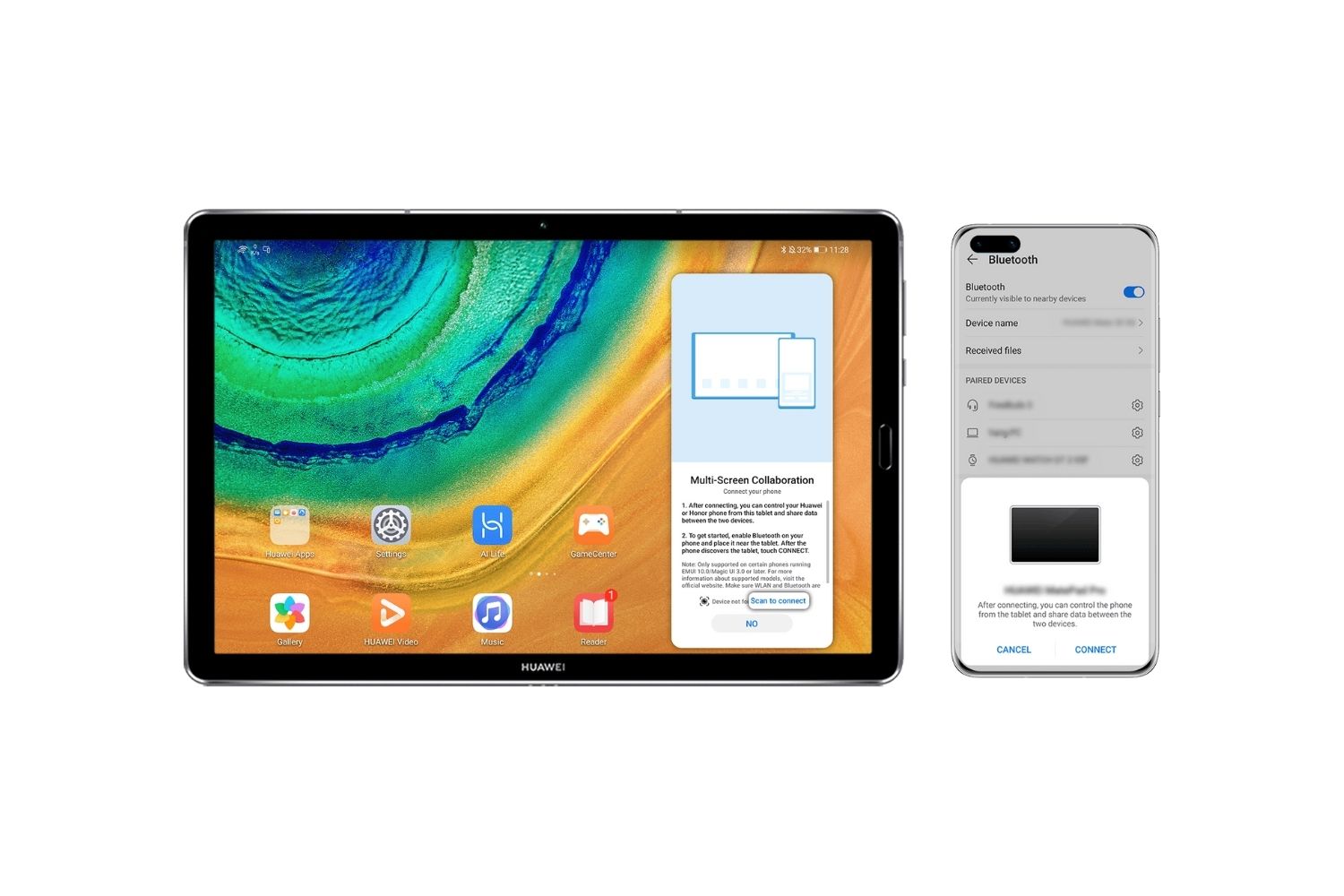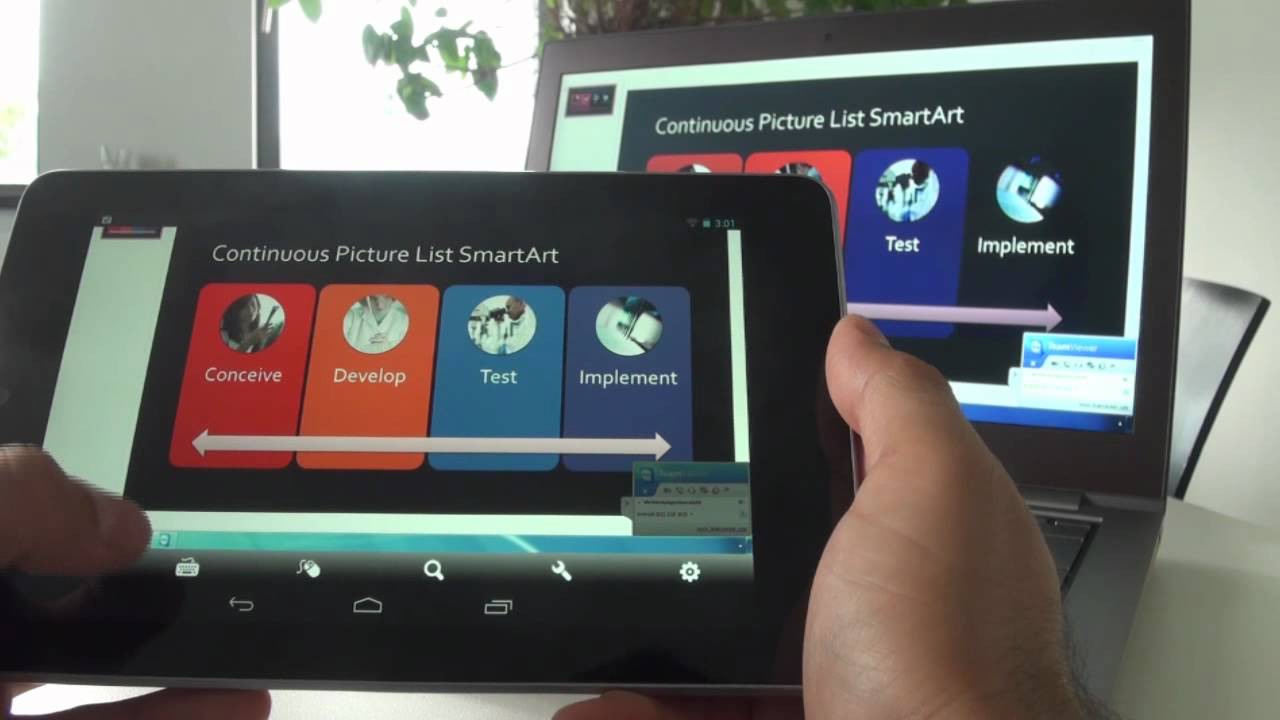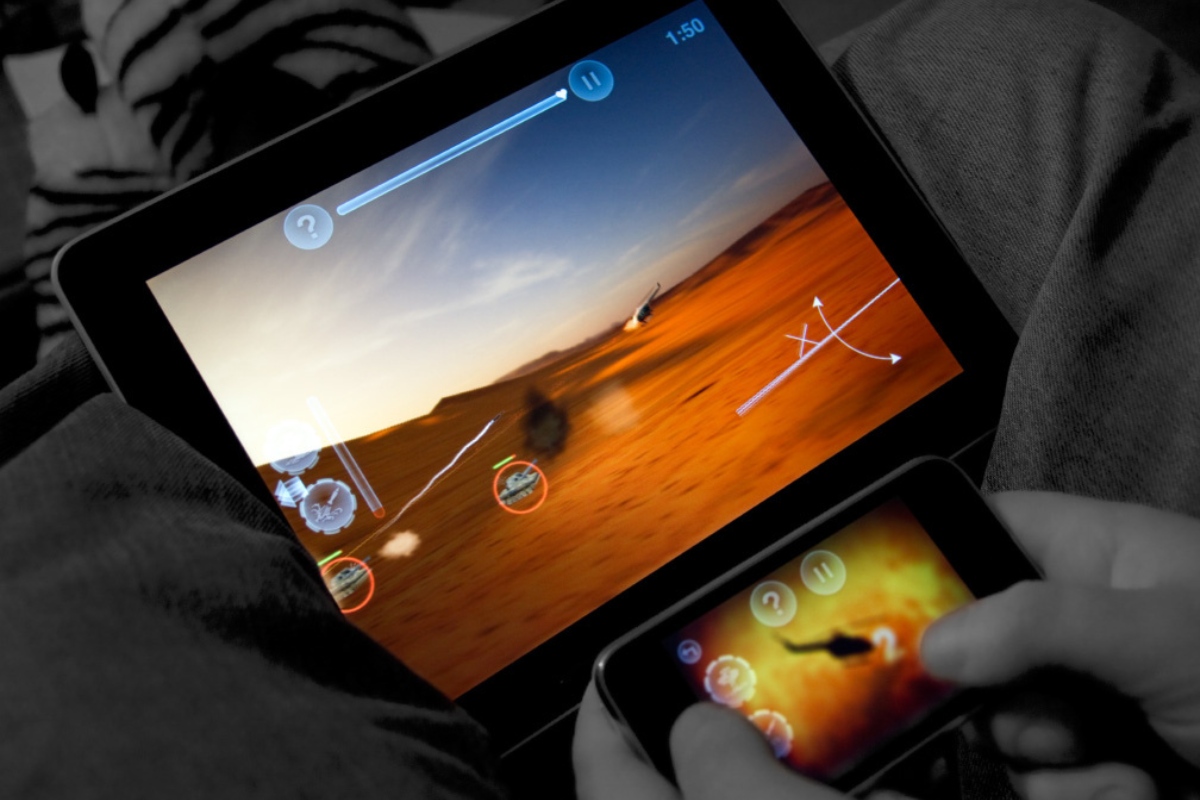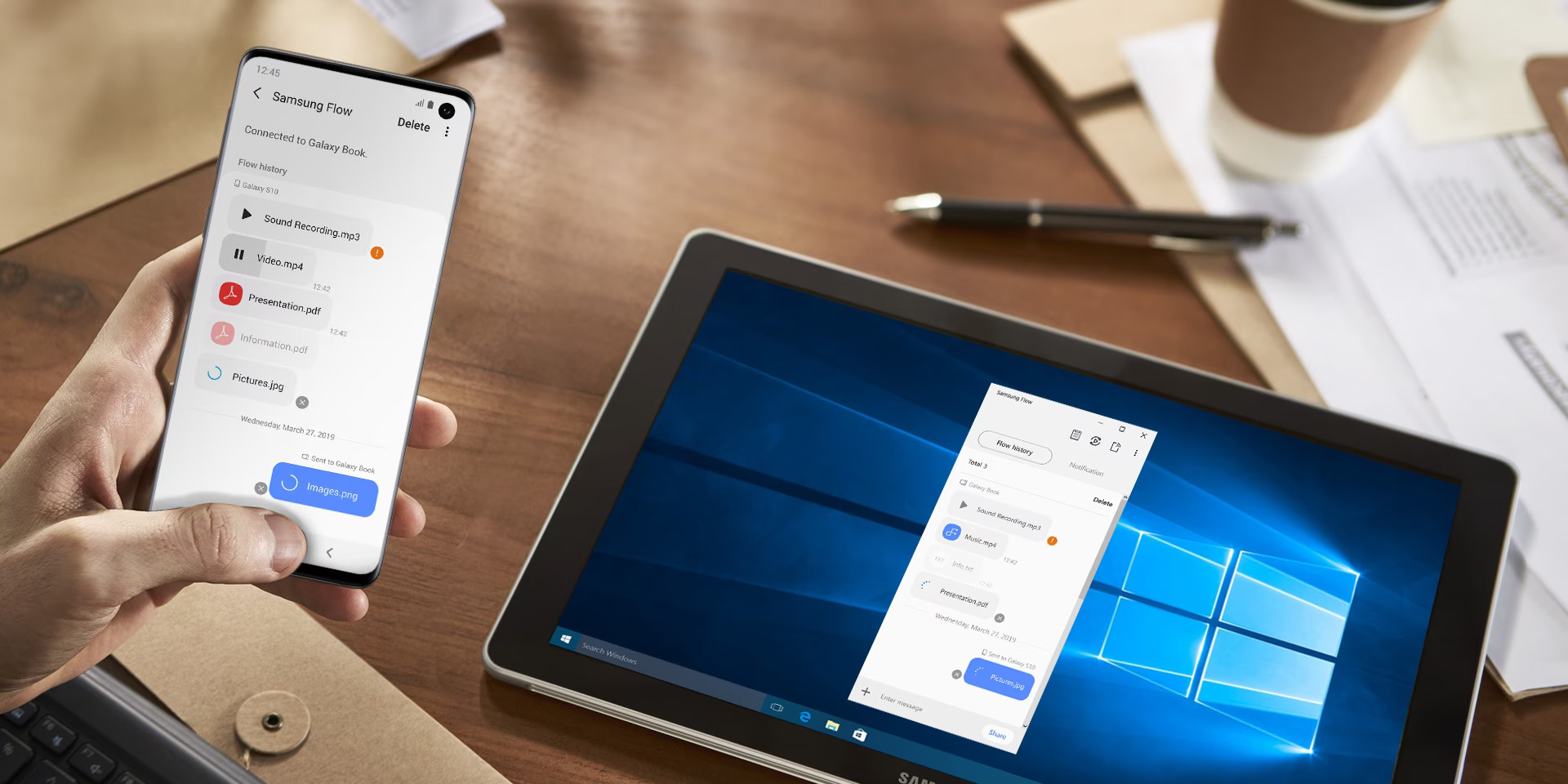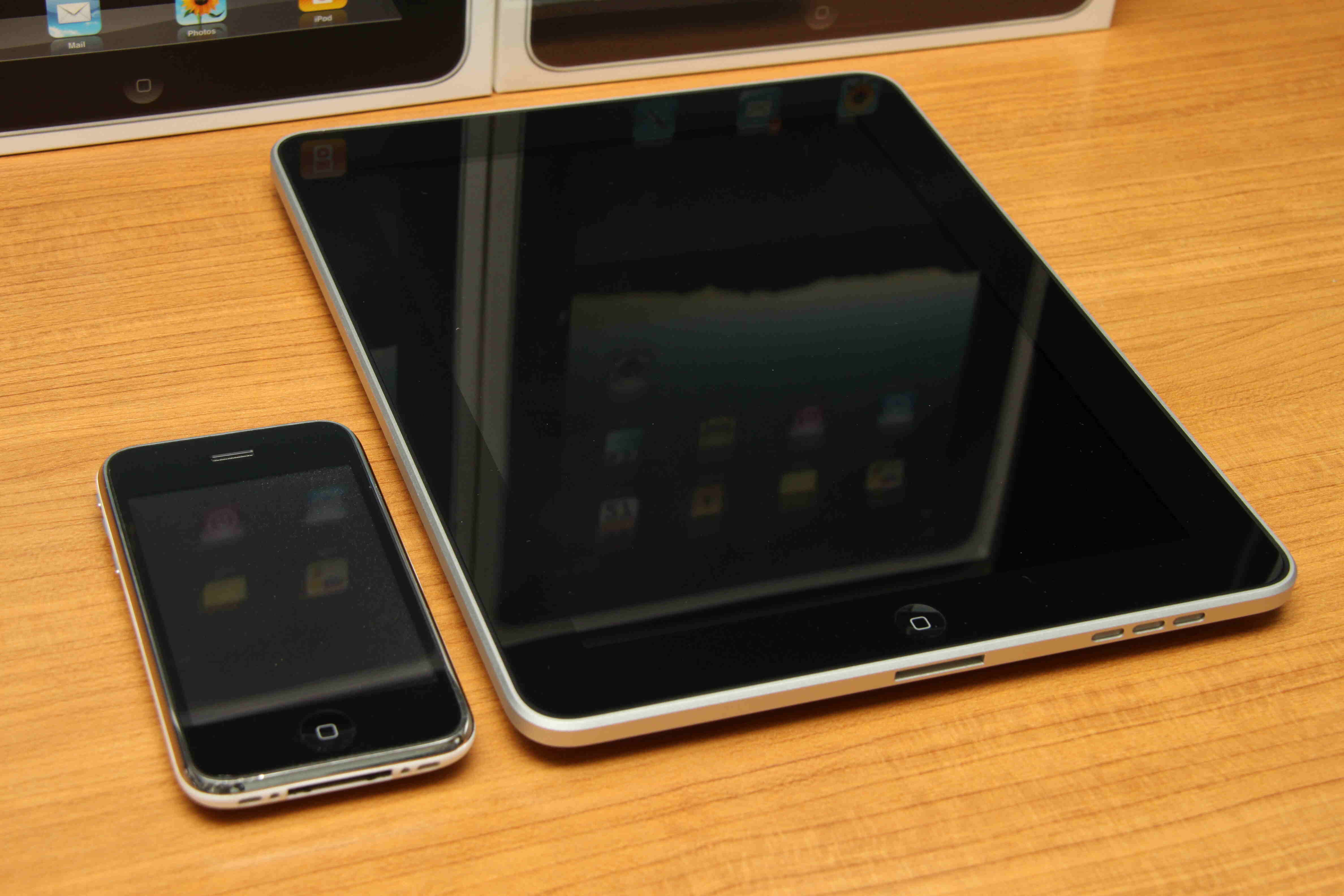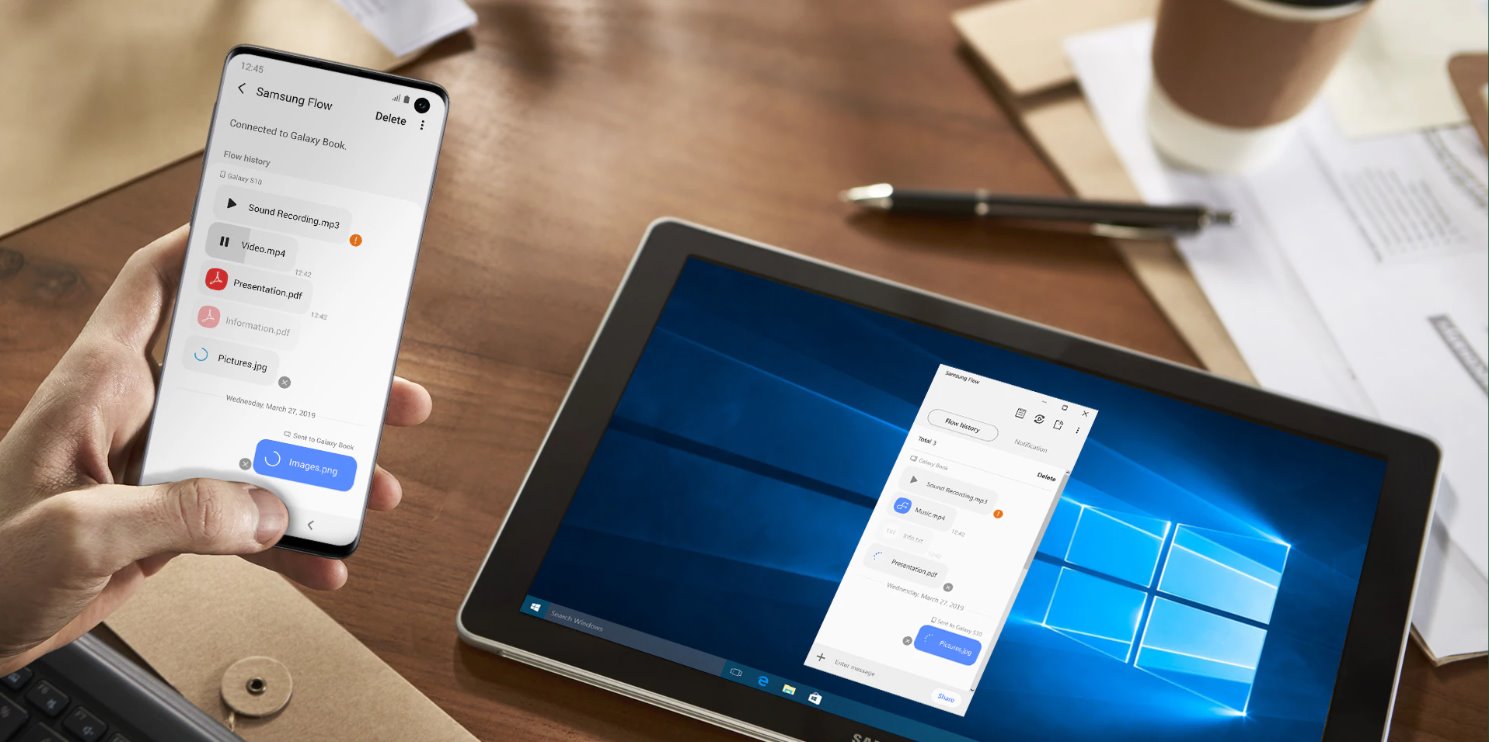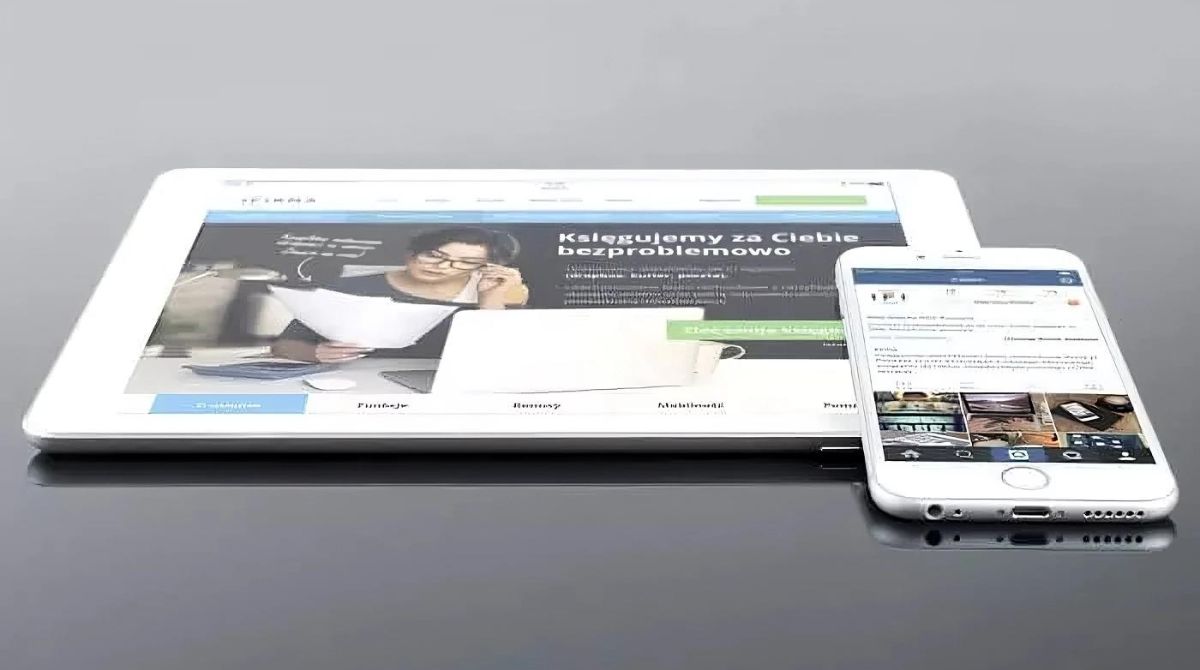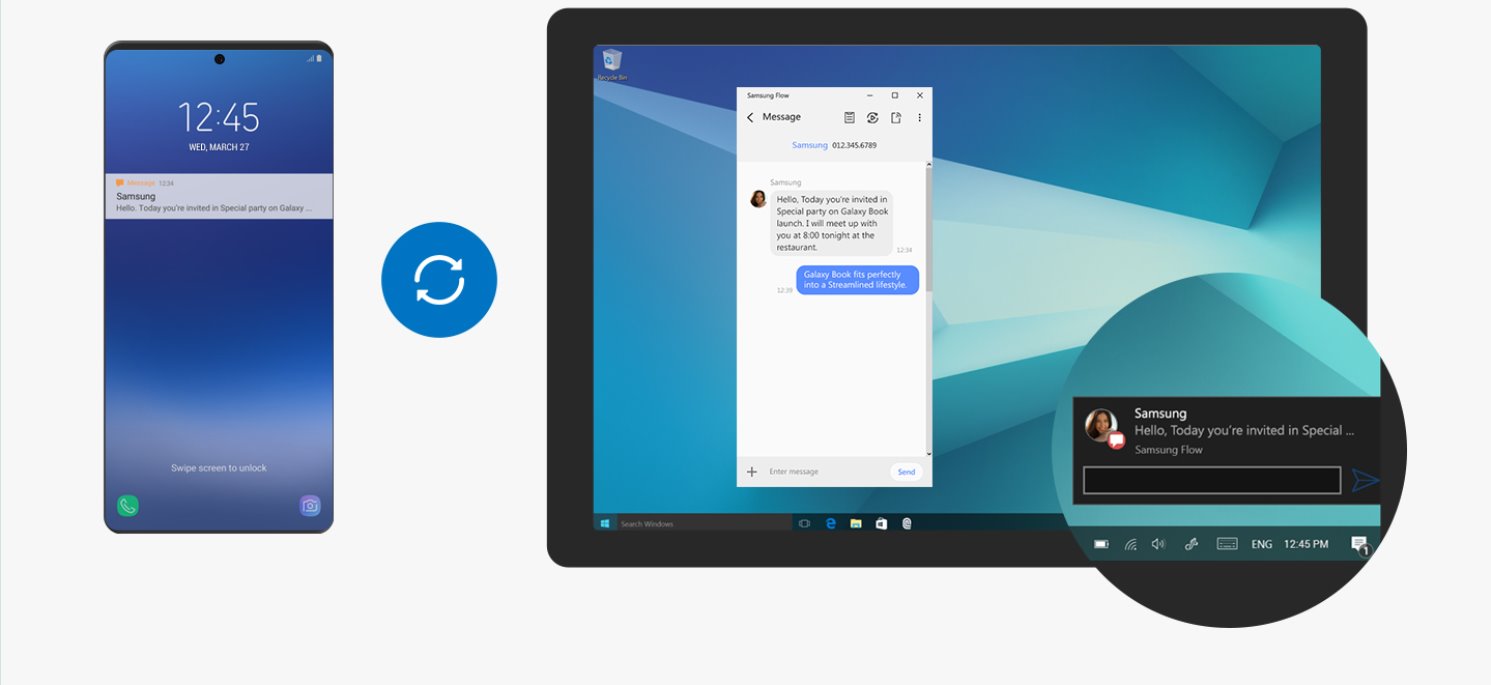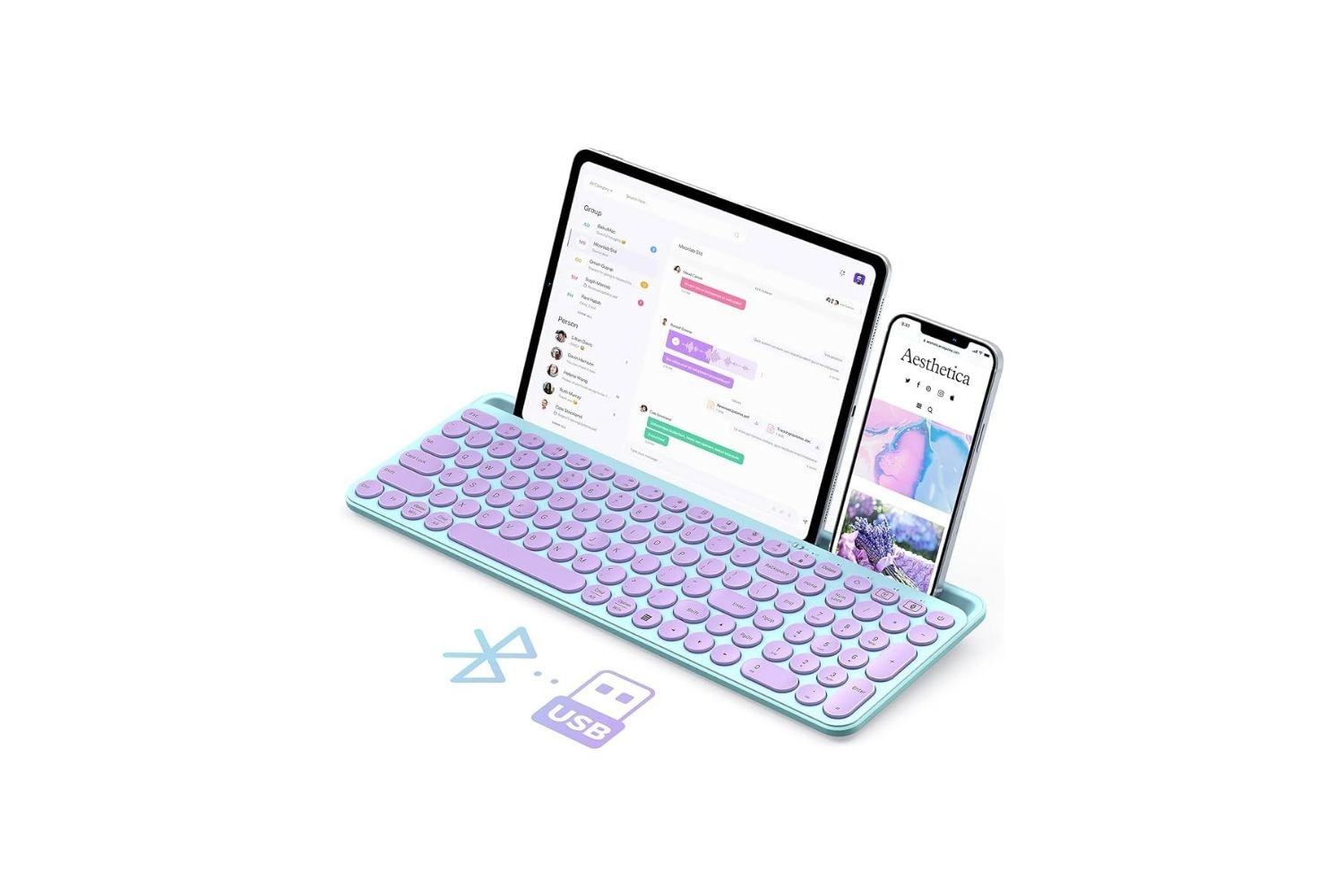Introduction
Welcome to the digital era where technology continues to evolve at a rapid pace. With the increasing popularity of tablets, it’s no wonder users are constantly seeking ways to streamline their device usage. One innovative solution is the ability to control your tablet using your smartphone, giving you more flexibility and convenience.
Gone are the days of constantly switching between devices or struggling to navigate small screens. By leveraging the power of your smartphone, you can effortlessly interact with your tablet without even touching it. Whether it’s for presenting slideshows, watching movies, or simply accessing your tablet remotely, this feature is a game-changer.
Before diving into the details of how to control your tablet with your phone, it’s essential to understand the requirements and setup process. This guide will walk you through each step, ensuring a seamless experience from start to finish.
So, if you’re ready to take control of your tablet with the convenience of your phone, let’s get started and explore the possibilities. Whether you’re a tech enthusiast or a casual user, this guide will empower you to maximize your tablet experience and optimize your workflow.
What You Need
Before you can start controlling your tablet with your phone, there are a few things you’ll need to ensure a smooth setup process. Here’s a checklist of the essentials:
- A tablet: Your tablet should have Wi-Fi connectivity and be compatible with the app you’ll be using to control it.
- A smartphone: Make sure your smartphone is also connected to the same Wi-Fi network as your tablet. It should be running the appropriate operating system and have enough storage space to download the necessary app.
- An app: You’ll need to download and install a specific app on your smartphone to establish a connection with your tablet. There are several apps available that offer remote control functionalities, so choose one that is compatible with your tablet’s operating system.
- Internet connectivity: Both your smartphone and tablet should have access to a stable internet connection to establish a connection between the two devices.
By having these essentials in place, you’ll be well-prepared to proceed with the setup process and start enjoying the convenience of controlling your tablet with your phone.
Setting Up the Tablet
Before you can begin controlling your tablet with your phone, it’s important to ensure that your tablet is properly set up and configured. Here are the steps to follow:
- Update your tablet: It’s always a good idea to make sure that your tablet’s operating system is up to date. Check for any software updates and install them if available. This will ensure that you have the latest features and compatibility.
- Enable Wi-Fi: Make sure that the Wi-Fi on your tablet is turned on and connected to the same network as your phone. This will allow the two devices to communicate with each other.
- Adjust settings: Depending on the app you’ll be using to control your tablet, there may be specific settings that need to be adjusted. For example, you may need to enable remote control or allow access permissions for the app. Refer to the app’s documentation or support resources for guidance.
- Set up security: If you have any security measures in place on your tablet, such as a passcode or fingerprint recognition, make sure to configure them appropriately. This will help ensure the privacy and security of your device.
By following these steps, you will have your tablet ready for remote control from your phone. Take a few minutes to complete the setup process, and you’ll be one step closer to unlocking the full potential of controlling your tablet with ease.
Connecting the Devices
Once you have your tablet properly set up, the next step is to establish a connection between your tablet and smartphone. Here’s how you can do it:
- Ensure Wi-Fi connectivity: Make sure that both your tablet and smartphone are connected to the same Wi-Fi network. This is crucial for the devices to communicate with each other.
- Open the app: Launch the app on your smartphone that you downloaded for controlling your tablet. The specific name and interface of the app may vary depending on the one you’ve chosen.
- Select your tablet: Within the app, you should find an option to connect or pair your tablet. Tap on it and look for your tablet’s name in the list of available devices.
- Establish the connection: Once you locate your tablet’s name, tap on it to initiate the pairing process. Follow any on-screen prompts or instructions that may appear to complete the connection.
- Confirm the connection: After successfully connecting your tablet and smartphone, you should see a confirmation message or indicator within the app. This indicates that the devices are now linked.
It’s worth noting that depending on the app you’re using, there may be additional configuration steps or settings to adjust to optimize the connection. Explore the app’s settings or refer to their documentation for more information if needed.
Once you have successfully connected your tablet and smartphone, you’re ready to start controlling your tablet remotely. The next section will explain the process of controlling your tablet using your phone in more detail.
Download and Install the App
In order to control your tablet with your phone, you’ll need to download and install a specific app that offers remote control functionality. Here’s how you can do it:
- Choose the right app: There are numerous apps available in the app stores that allow you to control your tablet with your phone. Research and select the one that is compatible with your tablet’s operating system.
- Open the app store: On your smartphone, navigate to the app store associated with your device’s operating system. This could be the Apple App Store for iOS devices or the Google Play Store for Android devices.
- Search for the app: Use the search function within the app store to find the remote control app you have chosen. Enter the name of the app or relevant keywords to locate it quickly.
- Download and install: Once you have found the app, tap on the “Download” or “Install” button. Wait for the app to download and install on your smartphone. This may take a few moments depending on your internet connection and device performance.
- Launch the app: After the app is installed, locate it on your smartphone’s home screen or app drawer. Tap on the app icon to open it.
It’s important to note that some remote control apps may require additional permissions or settings adjustments during the installation process. Make sure to read and understand the app’s requirements and permissions before proceeding.
Once the app is successfully installed and launched on your smartphone, you are one step closer to gaining control over your tablet with your phone. The next section will guide you on how to establish the connection between your tablet and smartphone within the app.
Connecting the App to Your Tablet
Now that you have downloaded and installed the remote control app on your smartphone, it’s time to connect it to your tablet. Follow these steps to establish the connection:
- Launch the app: Open the remote control app on your smartphone. You should see a user interface that provides various controls and options.
- Access the connection settings: Look for a settings icon or menu within the app. Usually, this can be found on the top-right corner or in the app’s main navigation menu.
- Select your tablet: Within the connection settings, you should find an option to add or pair a new device. Tap on it to initiate the pairing process.
- Scan for devices: The app will scan for available tablets within the vicinity. Make sure that your tablet is turned on and connected to the same Wi-Fi network as your phone.
- Choose your tablet: Once the scan is complete, you should see a list of available tablets. Select your tablet from the list, typically by tapping on its name.
- Authenticate the connection: Depending on the app and tablet, you may need to follow additional authentication steps to ensure a secure connection between your devices. This could involve entering a passcode, verifying a security prompt, or scanning a QR code.
- Confirm the connection: After successfully connecting your smartphone to your tablet, you should see a confirmation message or indicator within the app. This indicates that the devices are now linked, and you can proceed to control your tablet using your phone.
Once the connection is established, you can enjoy the convenience of controlling your tablet with your phone. The next section will explain how you can use your smartphone to navigate and interact with your tablet remotely.
Controlling Your Tablet with Your Phone
Now that your smartphone is connected to your tablet, you can start experiencing the convenience of controlling your tablet remotely. Here’s how you can navigate and interact with your tablet using your phone:
- Touch navigation: Most remote control apps simulate touch gestures on your phone’s screen to control your tablet. This allows you to tap, swipe, and scroll just as you would on your tablet’s physical screen.
- Keyboard input: Some remote control apps provide a virtual keyboard on your phone’s screen, allowing you to type and input text on your tablet without physically touching it.
- Media control: With your phone as the remote, you can easily control media playback on your tablet. Play, pause, adjust volume, and skip through music, videos, or slideshows with the touch of a button.
- App selection: You can use your phone to open and switch between apps on your tablet. This comes in handy when you want to launch specific applications or access files without having to physically handle your tablet.
- Settings and configurations: Remote control apps often provide access to your tablet’s settings and configurations. You can adjust screen brightness, Wi-Fi settings, and other system preferences right from your phone.
- Copy and paste: Some apps allow you to copy text or images from your smartphone and paste them directly onto your tablet. This makes it easy to share content between your devices seamlessly.
By utilizing these control options, you can enjoy the ultimate convenience of managing your tablet from your smartphone. Whether you’re in a presentation, relaxing on the couch, or working in a different room, you have the power to control your tablet with ease.
Keep in mind that the functionalities and features of remote control apps may vary. Explore the app’s interface and settings to familiarize yourself with the available options and customize the experience to suit your needs.
Now that you know how to control your tablet with your phone, let’s explore some additional features and options that can enhance your remote control experience.
Additional Features and Options
In addition to the basic functionalities of controlling your tablet with your phone, many remote control apps offer additional features and options to enhance your experience. Here are a few notable ones:
- File transfer: Some apps allow you to transfer files between your smartphone and tablet. This can be useful for quickly sharing documents, photos, or media files without the need for physical connections or cloud storage.
- Screenshot and screen recording: Certain remote control apps enable you to capture screenshots or record the screen of your tablet directly from your phone. This comes in handy for demonstrating apps or saving important moments on your tablet.
- Multitasking and split-screen: Depending on the app and your tablet’s capabilities, you may have the option to enable multitasking or split-screen mode through your smartphone. This allows you to have multiple apps open and interact with them simultaneously.
- Gesture controls: Some remote control apps support gesture controls, enabling you to perform specific actions on your tablet by simply gesturing on your phone’s screen. This adds a touch of convenience and novelty to the overall experience.
- Customizable layouts: Certain apps offer the flexibility to customize the layout and appearance of the remote control interface. You can rearrange buttons, change themes, or even create custom control schemes to suit your preferences.
- Widgets and shortcuts: Depending on the app, you may have the ability to create widgets or shortcuts on your smartphone’s home screen for quick access to specific features or apps on your tablet. This streamlines the control process and saves you time.
These additional features and options can further enhance your remote control experience, making it more personalized and tailored to your needs. Take the time to explore your chosen app’s settings, documentation, or user community to discover all the available functionalities and make the most out of controlling your tablet with your phone.
With all these capabilities at your fingertips, troubleshooting any issues that may arise is crucial. The next section will provide you with some common troubleshooting tips to overcome any challenges you may encounter.
Troubleshooting
While controlling your tablet with your phone can bring great convenience, there may be times when you encounter certain challenges or issues. Here are some common troubleshooting tips to help you overcome any potential problems:
- Ensure Wi-Fi connectivity: Double-check that both your smartphone and tablet are connected to the same Wi-Fi network. Inconsistent or weak network connections can lead to communication issues between the devices.
- Restart the devices: Sometimes, a simple restart can resolve connectivity or performance issues. Try restarting both your smartphone and tablet to see if it resolves the problem.
- Update the app: Apps often release updates to improve performance and fix bugs. Make sure you’re using the latest version of the remote control app by checking for updates in the app store.
- Reinstall the app: If the issues persist, you can try uninstalling and reinstalling the app on your smartphone. This can help resolve any software-related issues or glitches that may be affecting the connection.
- Check device compatibility: Ensure that the remote control app you’re using is compatible with both your smartphone and tablet’s operating systems. Incompatibility can cause connectivity or functionality issues.
- Review app settings: Double-check the settings within the remote control app. Make sure you’ve granted the necessary permissions and adjusted any configuration options as required.
- Check firewall or security settings: If you’re experiencing difficulties establishing a connection, examine your device’s firewall or security settings. Temporarily disabling them or adjusting the settings may help resolve the issue.
If you’ve tried these troubleshooting techniques and are still unable to establish a reliable connection or resolve the issue, it’s recommended to consult the app’s support resources or reach out to their customer support for further assistance. They can provide specific guidance tailored to the app and address any unique issues you may be encountering.
Remember, troubleshooting may require some patience and experimentation, but with perseverance, you’ll likely overcome any challenges and enjoy the seamless experience of controlling your tablet with your phone.
Stay up to date with new features and updates for the remote control app, as they may offer additional troubleshooting options or improvements to address common issues.
Now that we’ve covered the troubleshooting tips, let’s conclude with a summary of what we’ve learned so far.
Conclusion
Controlling your tablet with your phone opens up a world of convenience and flexibility, allowing you to seamlessly interact with your tablet from a remote location. By following the steps outlined in this guide, you can easily set up the connection between your smartphone and tablet, download the necessary app, and begin enjoying the benefits of remote control.
From touch navigation to media control, app selection, and even file transfer, the ability to operate your tablet from your phone brings a new level of convenience to your daily life. Whether you’re giving a presentation, relaxing on the couch, or working in another room, this innovative feature allows you to take charge of your tablet with ease.
While encountering challenges is not uncommon, this guide has provided troubleshooting tips to help you overcome common issues. From checking your Wi-Fi connectivity to updating the app and adjusting settings, these steps can get you back on track if you encounter any difficulties along the way.
Remember to explore the additional features and options offered by remote control apps, such as file transfer, gesture controls, and customizable layouts, to personalize your remote control experience to your preferences and needs.
With the knowledge and guidance provided in this guide, you’re now equipped to control your tablet with your phone and make the most out of your devices. Embrace the convenience and flexibility that this feature offers, and enjoy the seamless transition between your phone and tablet.
So, go ahead, take control, and unlock the full potential of your tablet with the power of your phone!







